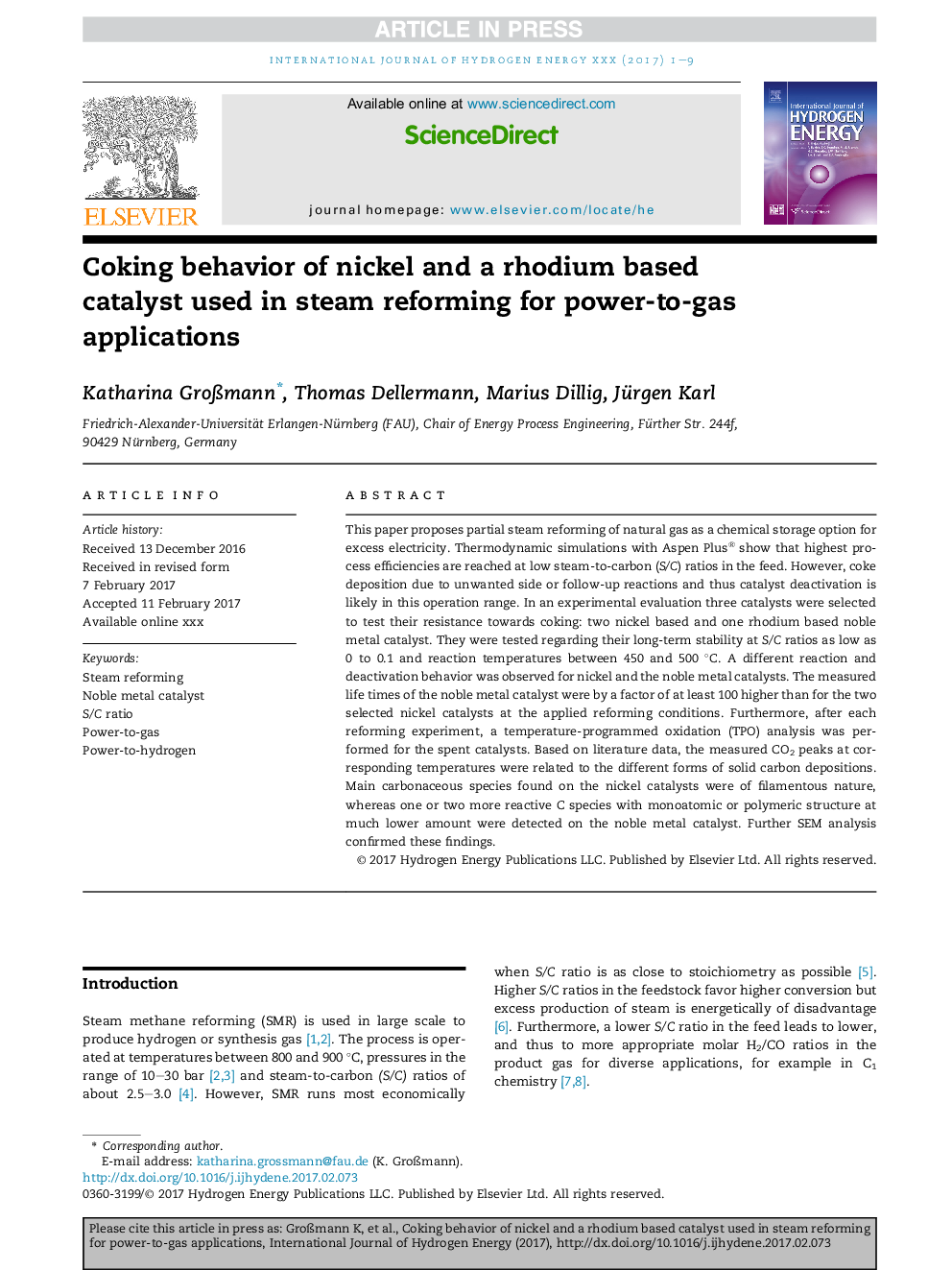| Article ID | Journal | Published Year | Pages | File Type |
|---|---|---|---|---|
| 5145718 | International Journal of Hydrogen Energy | 2017 | 9 Pages |
Abstract
This paper proposes partial steam reforming of natural gas as a chemical storage option for excess electricity. Thermodynamic simulations with Aspen Plus® show that highest process efficiencies are reached at low steam-to-carbon (S/C) ratios in the feed. However, coke deposition due to unwanted side or follow-up reactions and thus catalyst deactivation is likely in this operation range. In an experimental evaluation three catalysts were selected to test their resistance towards coking: two nickel based and one rhodium based noble metal catalyst. They were tested regarding their long-term stability at S/C ratios as low as 0 to 0.1 and reaction temperatures between 450 and 500 °C. A different reaction and deactivation behavior was observed for nickel and the noble metal catalysts. The measured life times of the noble metal catalyst were by a factor of at least 100 higher than for the two selected nickel catalysts at the applied reforming conditions. Furthermore, after each reforming experiment, a temperature-programmed oxidation (TPO) analysis was performed for the spent catalysts. Based on literature data, the measured CO2 peaks at corresponding temperatures were related to the different forms of solid carbon depositions. Main carbonaceous species found on the nickel catalysts were of filamentous nature, whereas one or two more reactive C species with monoatomic or polymeric structure at much lower amount were detected on the noble metal catalyst. Further SEM analysis confirmed these findings.
Related Topics
Physical Sciences and Engineering
Chemistry
Electrochemistry
Authors
Katharina GroÃmann, Thomas Dellermann, Marius Dillig, Jürgen Karl,
